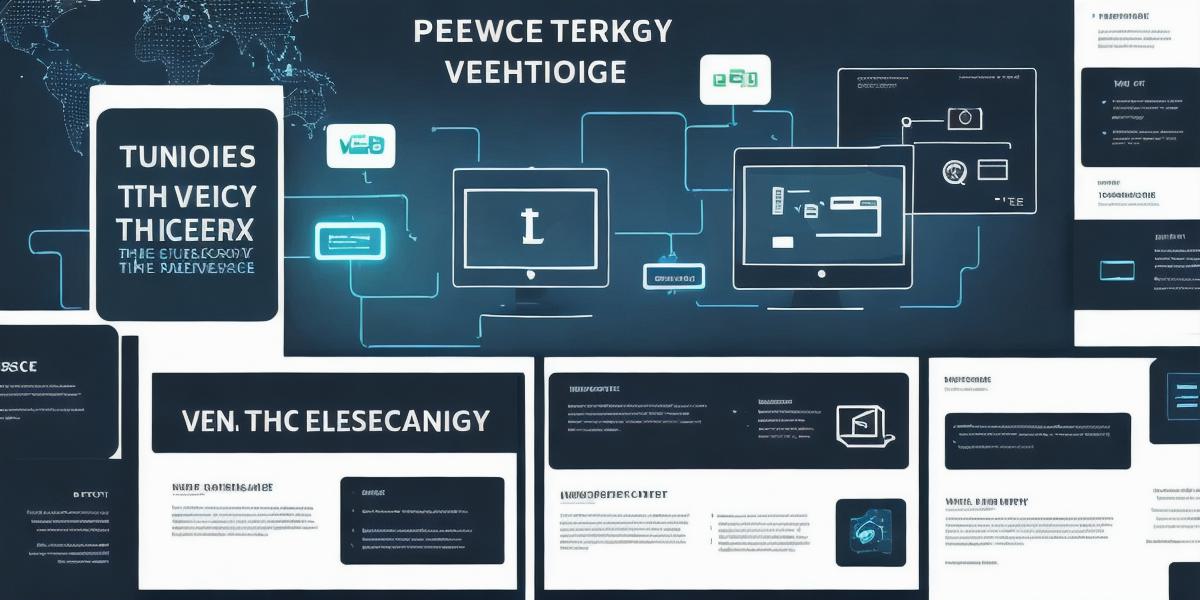Introduction
Web3 technology and blockchain are two terms that are often used interchangeably, but they refer to different things. While both technologies deal with decentralized systems, Web3 technology is a subset of blockchain that focuses on creating a more open and accessible internet. In this article, we will explore the differences and benefits of Web3 technology and blockchain for developers.

What is Blockchain?
Blockchain is a distributed ledger that records transactions in a secure and transparent manner. It was first introduced as the underlying technology behind Bitcoin, but it has since been used for various other applications such as supply chain management, voting systems, and identity verification. The key features of blockchain include decentralization, immutability, and transparency.
What is Web3 Technology?
Web3 technology refers to a set of decentralized technologies that aim to create a more open and accessible internet. It builds on top of blockchain technology and adds various features such as smart contracts, decentralized applications (dApps), and privacy-preserving techniques. The goal of Web3 technology is to enable individuals to have control over their data and assets without relying on centralized institutions.
Differences between Web3 Technology and Blockchain
- Decentralization: While both Web3 technology and blockchain are decentralized, Web3 technology takes it a step further by enabling individuals to have more control over their data and assets. This is achieved through the use of dApps that run on top of blockchain networks.
- Privacy: Web3 technology emphasizes privacy as a key feature. It enables users to have complete control over their data and assets without exposing it to third-party intermediaries. This is achieved through the use of zero-knowledge proofs, which allow users to prove the validity of a statement without revealing any additional information.
- Smart Contracts: Web3 technology leverages smart contracts to automate complex transactions. Smart contracts are self-executing contracts that can be programmed to automatically execute when certain conditions are met. This enables developers to create decentralized applications that can operate autonomously without the need for intermediaries.
- dApps: Web3 technology enables the creation of dApps, which are decentralized applications that run on top of blockchain networks. dApps can be used for various purposes such as social networking, gaming, and supply chain management. They offer a more secure and transparent way to conduct transactions without relying on centralized institutions.
Benefits of Web3 Technology and Blockchain
- Decentralization: Both Web3 technology and blockchain enable decentralization, which eliminates the need for intermediaries and reduces costs. This enables individuals and businesses to have more control over their data and assets.
- Transparency: Both Web3 technology and blockchain enable transparency, which ensures that all transactions are recorded in a secure and immutable manner. This enhances trust and reduces the risk of fraud.
- Security: Both Web3 technology and blockchain offer high levels of security, which is achieved through the use of cryptographic techniques. This enables individuals and businesses to conduct transactions with confidence without worrying about data breaches or cyber attacks.
- Privacy: Web3 technology emphasizes privacy as a key feature. It enables users to have complete control over their data and assets without exposing it to third-party intermediaries.
Real-life examples of Web3 Technology and Blockchain in action
- CryptoKitties: CryptoKitties is a decentralized game that was built on top of the Ethereum blockchain. It enables users to breed, buy, and sell unique digital cats using cryptocurrency. The game has generated millions of dollars in revenue and attracted millions of users.
- Brave: Brave is a web browser that uses blockchain technology to enable users to earn cryptocurrency by viewing ads. It also enables users to donate cryptocurrency to their favorite content creators.
- OpenZeppelin: OpenZeppelin is a security auditing firm that uses blockchain technology to provide secure smart contracts and decentralized applications. It has helped numerous clients build secure and reliable dApps.
- 0x: 0x is a decentralized exchange that enables users to trade tokens on various blockchain networks using smart contracts. It has been integrated with numerous dApps and has enabled millions of trades.
Summary

Web3 technology and blockchain are two technologies that offer significant benefits for developers. While both technologies deal with decentralized systems, Web3 technology takes it a step further by enabling individuals to have more control over their data and assets. The use of smart contracts, dApps, and privacy-preserving techniques enables developers to create decentralized applications that can operate autonomously without the need for intermediaries. As more organizations adopt blockchain technology, we can expect to see a growing number of Web3-based applications that will revolutionize various industries.
